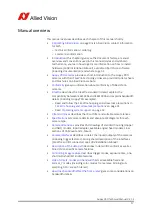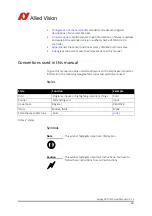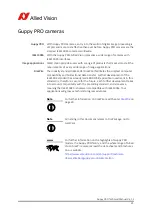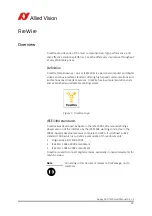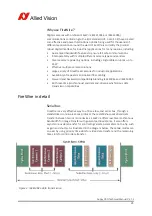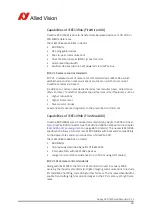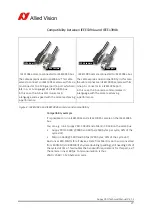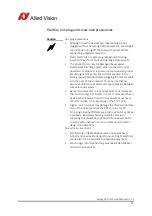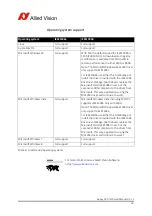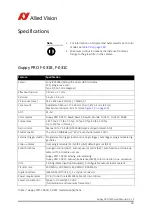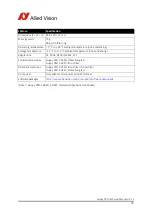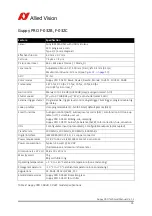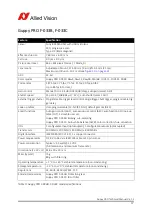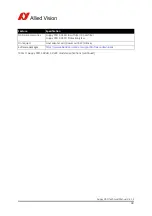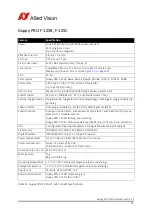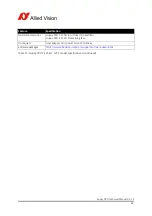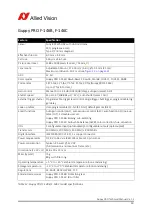
Guppy PRO Technical Manual
V4.1.2
28
Image transfer via IEEE1394a and IEEE1394b
IEEE1394b bandwidths
According to the IEEE1394b specification on isochronous transfer, the largest
recommended data payload size is 8192 bytes per 125 µs cycle at a bandwidth
of 800 Mbit/s.
Technical detail
IEEE1394a
IEEE1394b
Transmission mode
Half duplex (both pairs needed)
400 Mbit/s data rate
aka: a-mode, data/strobe (D/S)
mode, legacy mode
Full duplex (one pair needed)
1 Gbit/s signaling rate, 800 Mbit/s
data rate
10b/8b coding (Ethernet), aka: b-
mode (beta mode)
Devices
Up to 63 devices per network
Number of cameras
Up to 16 cameras per network
Number of DMAs
4 to 8 DMAs (parallel) cameras / bus
Real time capability
Image has real time priority
Available bandwidth acc. IIDC
(per cycle 125 µs)
4096 bytes per cycle
~ 1000 quadlets @ 400 Mbit/s
8192 bytes per cycle
~ 2000 quadlets @ 800 Mbit/s
(@1 GHz clock rate)
For further detail read chapter
Max. image bandwidth
31.25 MByte/s
62.5 MByte/s
Max. total bandwidth
~45 MByte/s
~85 MByte/s
Number of busses
Multiple busses per PC
limit: PCI bus
Multiple busses per PC
limit: PCI (Express) bus
CPU load
Almost none for DMA image transfer
Gaps
Gaps negatively affect
asynchronous performance of
widespread network (round trip
delay), reducing efficiency
No gaps needed, BOSS mode for
parallel arbitration
Table 3: Technical detail comparison: IEEE1394a and IEEE1394b
Note
The bandwidth values refer to the fact:
1 MByte = 1024 KB




